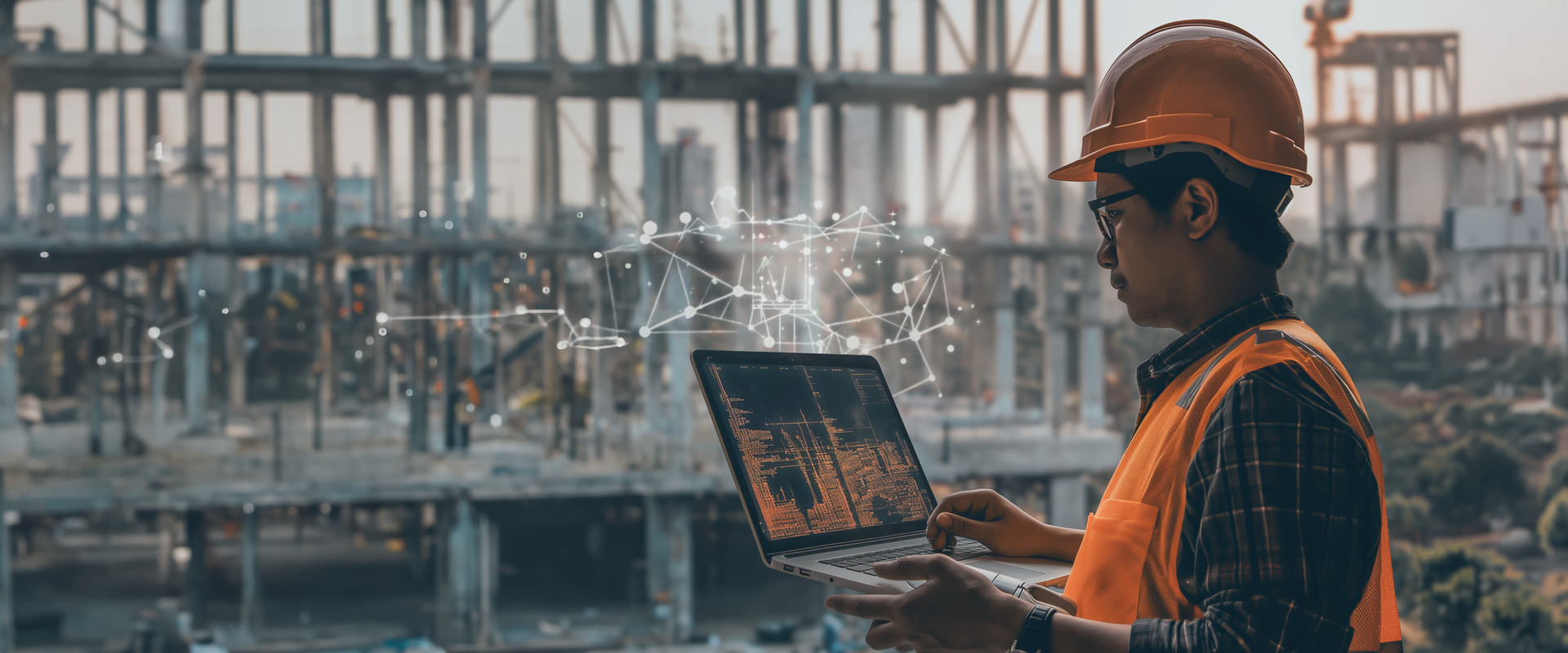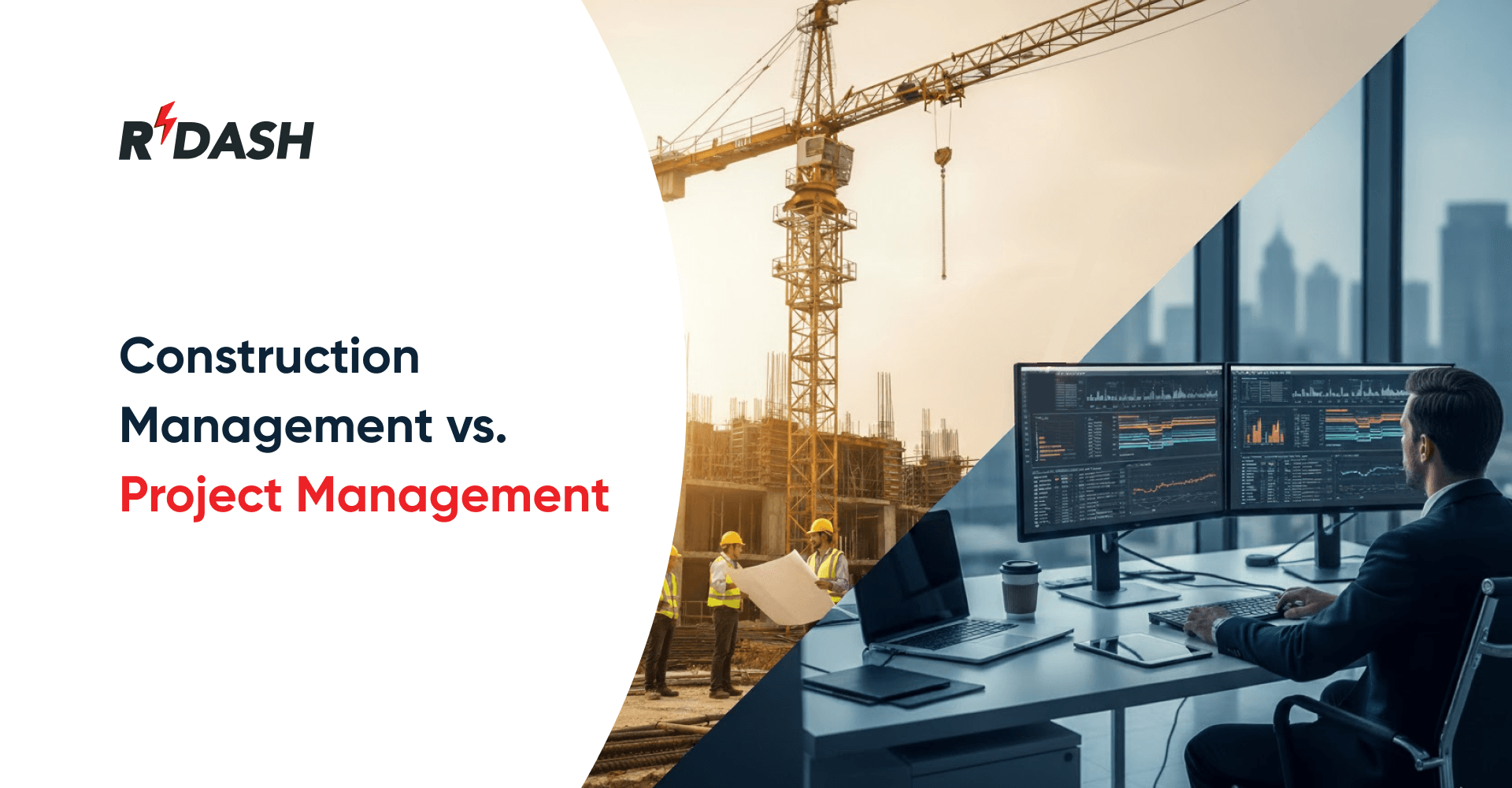Construction technologies have played a crucial role in shifting the common perception that the construction industry lags in adopting modern advancements. The COVID-19 pandemic has highlighted the industry’s resilience and adaptability, demonstrating how quickly it can embrace innovation. Despite numerous challenges, the engineering and construction sectors have emerged stronger, driven by a renewed focus on sustainable growth and technological adoption.
Experts at Deloitte note that maintaining stability during the pandemic allowed the industry to seize opportunities for ambitious changes and set higher goals. Reports from the 2022 CIArb Webinar and the Global Construction 2030 study predict a significant growth trajectory for the global construction market, with projections of an $8 trillion increase by 2030. Much of this growth is expected to come from China, the U.S., and India, which are set to account for a large share of global construction output.
Several factors are driving this growth trend, including advancements in construction methods, innovations in technology and software, prevailing market conditions, and legislative support for new construction technologies.
Impact of Emerging Construction Technologies on Efficiency and Optimization
The construction industry, known for its long history of innovation, has seen remarkable advancements that have expanded the range of structures it can produce. For example, cofferdams and caissons have enabled the construction of large underwater structures, while advancements in tower crane technology have facilitated the building of towering skyscrapers.
Software companies and IT organizations have recognized the need for digitization in construction Technologies and are offering tailored solutions for various construction processes. Advanced surveillance technologies like sensors, cameras, and drones are being utilized to monitor construction operations and create more intelligent structures.
Construction Technologies Transforming the Construction Sector:
1. Building Information Modeling
Building information modeling has emerged as a leading and widely adopted construction technologies within the construction industry, aiding engineers, architects, and construction professionals in effective planning, design, modeling, and management of building structures. BIM involves creating a digital representation of a structure before its physical construction, allowing for the management of the project’s physical characteristics.
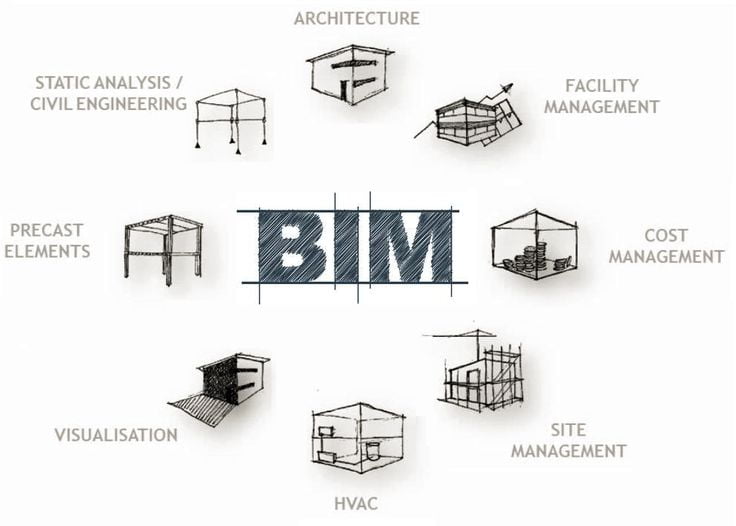
This detailed representation of the building structure, along with essential information, is shared with all involved in the construction Technologies project, enabling them to anticipate obstacles, mitigate risks, plan logistics, enhance efficiency, and establish a reliable basis for decision-making throughout the project lifecycle, from conception to decommissioning.
BIM technology fosters improved collaboration among all stakeholders in the construction industry, allowing each expert to contribute their expertise to specific areas of the model. This enables real-time review of project progress and outcomes.
BIM facilitates the creation of 3D models, supplemented by additional dimensions such as 4D for scheduling, 5D for cost estimating, 6D for sustainability, and 7D for operations maintenance, providing structured information. In essence, BIM offers numerous benefits including enhanced coordination, efficient design, time and cost savings, increased accuracy, and substantial reduction in errors and rework, ultimately leading to potential project cost savings of around 5-6%.
Building Information Modeling (BIM) serves a valuable role at every phase of construction – pre-construction, during construction, and post-construction stages.
- Before construction begins, BIM anticipates potential challenges, thereby minimizing the necessity for change orders throughout the project lifecycle.
- During construction, BIM fosters improved communication, collaboration, and efficiency by serving as a centralized platform for updates and accurate reference documentation.
- After construction, BIM equips clients with comprehensive information concerning every detail of the building project, enabling effective management of the structure throughout its entire lifecycle.
2. Artificial intelligence (AI)
Artificial intelligence is a technology that empowers computing systems to comprehend, retain, and utilise information in decision-making and idea implementation. AI not only interacts with humans naturally but also learns from these interactions through machine learning.
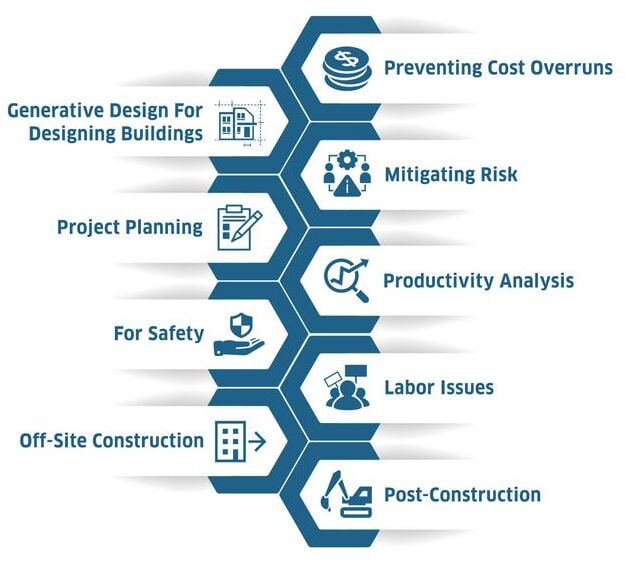
AI has the potential to enhance productivity by complementing human skills and reducing mundane tasks. It can autonomously make decisions, while machine learning enables AI to learn from past experiences. In the construction industry, where strategic decision-making greatly impacts productivity and safety, AI and machine learning are already making significant changes:
- Enhancing job site safety and health by using machine learning algorithms to analyze site images and predict risks and safety violations.
- Recognizing inefficiencies and suggesting optimized timelines based on past project data, thereby reducing costs.
- Improving building design by considering various factors and exploring multiple variations.
- Creating digital twins of proposed structures, factoring in variables like weather and location for predictive design.
- Boosting overall productivity by powering machinery to perform repetitive tasks rapidly, such as bricklaying and concrete pouring.
Currently, AI is employed in the construction Technologies to optimize project schedules using historical data, identify hazardous worker behavior through image recognition, and deploy real-time solutions. These applications enable AI to prioritize maintenance schedules with enhanced analytical tools. It’s evident that AI and machine learning will profoundly influence every aspect of construction projects, from planning to completion.
3. Augmented Reality (AR)
It is a digital overlay that immerses users in an enhanced view of the real world by incorporating digital elements, effectively blocking out external physical surroundings. AR, once predominantly associated with gaming, has now emerged as a transformative tool in the construction sector. Alongside virtual reality (VR), AR enables construction technologies firms to visualize various aspects of the design, construction, and post-construction phases of projects.

It provides a live view of the physical world, enhanced with computer-generated sensory input, either directly or indirectly. When combined with Building Information Modeling (BIM) technology, VR and AR offer limitless possibilities. BIM creates the building model, while AR or VR allows users to digitally visualize and navigate through proposed structure models.
Augmented and virtual reality offer diverse applications, including:
- Facilitating remote collaboration among project teams, enabling seamless cooperation from any location worldwide,.
- Providing 3D visualization of projects and their surroundings, allows for rapid and precise simulation of architectural or structural changes, spontaneous measurements, and design enhancements, leading to significant improvements in real-time design feedback.
- Enhancing safety measures and training programs on construction sites, with the potential to establish and monitor safe working conditions remotely by managers, supervisors, and inspectors.
- Allowing project stakeholders and designers to take virtual tours of building structure models, providing a firsthand experience of the physical structure’s appearance.
- Programming simulations for risk assessment and identifying potential clashes at regular intervals throughout the project duration.
4.3D printing
It is also known as additive manufacturing, which which entails the gradual construction of physical structures based on a digital blueprint. Unlike conventional printers, 3D printers have the capability to utilize various materials for constructing structural components and even entire building structures. This technology has become increasingly essential in the construction sector over time, particularly due to its consideration of the impact of material sourcing and procurement.

Advancements in technology have expanded its applications in construction processes, allowing for the use of diverse materials and offering unparalleled design flexibility. By utilizing computer-aided design models, 3D printing has the potential to create intricate three-dimensional structures layer by layer, surpassing the limitations of traditional methods. Additionally, 3D printing marginally reduces the costs associated with constructing complex shapes and structures, providing architects and designers with greater freedom in their creative endeavors.
3D printing technology is still in its developmental phase for large-scale construction projects; nonetheless, the construction industry is reaping several benefits from its utilization:
- 3D printing offers the flexibility to prefabricate structural components either offsite or onsite as per project requirements. This capability allows for the prefabrication of materials beforehand, ensuring they are readily available for immediate use, unlike traditional building processes.
- Efficient material usage and reduced on-site waste are facilitated by 3D printing technology, which enables sample production or rapid structure creation under constant surveillance to ensure proper design implementation.
- Unlike conventional construction methods that can take months or years to complete, 3D-printed houses can be constructed swiftly and made ready for occupancy within a matter of days.
- The construction of digitally designed structures using 3D printing eliminates errors in the physical structure, thereby averting costly rework.
5. Blockchain Technology
Originally developed in 2008 to establish digital currency, blockchain technology has found applications in various industries, including construction. By enabling the recording of information in the construction supply chain, blockchain enhances functionality, efficiency, and transparency, thereby aiding construction project management. Its accessibility and transparency features have contributed to its growing importance in recent times.

Blockchain operates as an open public database, where virtual blocks store transactional data. These blocks are peer-to-peer controlled or verified by a network of computers. Every transaction within a blockchain network is recorded in its blocks, which contain diverse information such as proof of bank transactions, contract details, ownership documents, and testimonials. Since blockchain data is shared among users, it eliminates the need for central authorities or intermediaries in transactions.
Furthermore, blockchain encrypts and protects essential elements in construction operations and supply chains. It facilitates various contractual relationships, including smart contracts and electronic verifications. Construction billing and transactions conducted via blockchain enhance transparency and accountability in projects, addressing scope creep, contract changes, and waste reduction to minimize costs.
Blockchain technology offers several advantages to the construction industry, including:
- Encryption within a blockchain network ensures the security of proprietary information, enhancing overall safety and protection.
- The storage capacity required for information within a blockchain network is not extensive, making it suitable for storing data related to large-scale projects.
- The decentralized nature of blockchain allows for remote access to its contents from any location worldwide
6. Internet of Things
The construction industry has long embraced the Internet of Things (IoT), enabling connectivity between assets and leveraging big data analytics to offer fresh insights for project teams. IoT entails a network of intelligent physical devices integrated into electronics, sensors, actuators, software, and network connectivity. These embedded devices gather and exchange data over the internet, managed from a centralized platform.

IoT has the potential to revolutionize the construction sector, providing a smarter, more efficient, and safer platform for various operations. One significant application of IoT is the establishment of predictive maintenance programs, allowing for efficient functions such as shutting down unnecessary systems when not in use and automatically adjusting structural components as needed.
IoT offers additional functionalities within the construction industry:
- Smart equipment driven by IoT can execute repetitive tasks and self-maintain if equipped with advanced capabilities.
- IoT implementation enables tracking of on-site foot traffic and worker entry and exit data, streamlining processes and saving time compared to manual methods.
- Utilizing geo-location, IoT aids in identifying hazardous zones on construction sites, enhancing worker safety by issuing alerts.
- IoT contributes significantly to environmental preservation through smart technology, reducing the carbon footprint of construction projects. This includes features such as automatic vehicle shutdown during idle periods, waste measurement for improved disposal methods, and site analysis to minimize travel between different areas.
7. Big Data
Often called the “oil of the digital era,” data is the new resource organizations handle today, much like oil was for industry giants a century ago. Every day, 2.5 quintillion bytes of data are generated, stored, and analyzed as big data. Big data refers to massive data sets that reveal hidden trends, patterns, and correlations, aiding in better business decisions and forming the foundation for AI and machine learning. Big data is crucial in advancing the construction industry, drawing information from various sources such as websites, smartphones, social media, and other digital communication tools.
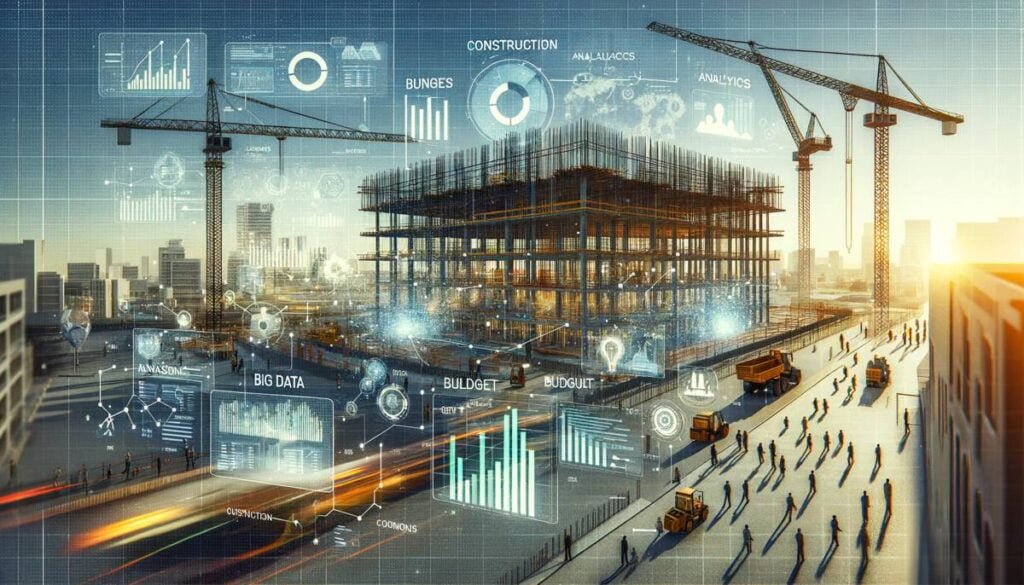
- By analyzing big data sourced from weather reports, traffic patterns, and community activities, construction activities can be optimally phased to enhance efficiency.
- Embedded devices in equipment capture data on their usage patterns, aiding in determining leasing rates, potential purchases, and strategies for reducing fuel consumption and environmental impact.
- Analysis of big data from past construction projects enables the prediction of patterns and risks, facilitating the smooth execution of similar projects without obstacles.
- Big Data serves as valuable input for BIM systems, assisting in scheduling maintenance activities based on trends and requirements.
- Geolocation data of machinery on construction sites, derived from big data, helps improve logistics, spare parts availability, and reduce downtimes.
- Big data collected from energy conservation measures in buildings is analyzed to ensure energy-saving objectives are met. Additionally, stress and strain data from heavy structures are scrutinized to identify potential safety risks.
8. Drones and Robots
In contrast to other industries, the construction sector remains largely reliant on manual labor, lacking significant automation. Surprisingly, robots have not been widely adopted for essential tasks in construction. Robotic Process Automation (RPA) represents a form of automation wherein computer software replicates and interacts with human actions, operating repetitively based on predefined processes and engaging with computer system interfaces. RPA enhances task efficiency, accuracy, consistency, and cost-effectiveness by automating repetitive processes.
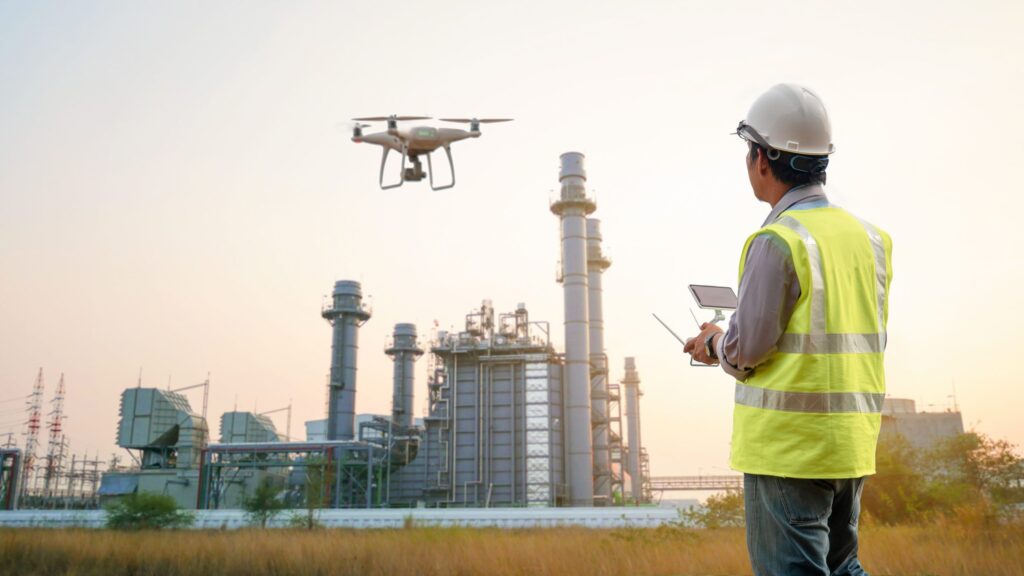
Drones have been actively involved in the construction sector for a while, with their role expected to expand further. Basic drone setups equipped with small cameras offer cost-effective solutions for conducting expensive monitoring tasks. In construction, drones serve various purposes, including aerial mapping surveys, tracking on-site equipment, and monitoring materials and resources susceptible to theft.
The construction industry in the Indian subcontinent is rapidly embracing unprecedented technologies, poised to revolutionize the construction process across projects of varying scales and locations. However, to keep pace with these advancements, construction sites must be managed more efficiently and effectively, departing from current haphazard practices. Enhancing construction management involves moving away from traditional manual methods and embracing modern tools like R Dash is remarkable for its comprehensive features, including site survey, design management, proposals, BOQ, and audit and handover. Its intuitive and user-friendly interface makes it accessible to almost anyone.
RDash: A Comprehensive Construction Management App

In addition to these innovative construction technologies, digital tools and software applications are playing a crucial role in modern construction management. One such app that has been gaining attention in the Indian construction industry is RDash. RDash is a new construction management app designed to streamline project workflows and enhance overall project performance. The app covers various aspects of construction Technologies management, including:
- Recce (Reconnaissance Survey): RDash simplifies the initial site survey process by providing tools for capturing and analyzing site conditions. This feature allows project teams to assess site conditions accurately and plan construction activities effectively.
- Design: The app facilitates collaborative design processes, allowing architects, engineers, and clients to work together in real-time. This feature enhances design accuracy, reduces errors, and ensures that the final design meets the client’s requirements.
- BOQ (Bill of Quantities): RDash provides tools for creating and managing Bills of Quantities, ensuring accurate cost estimation and budgeting. This feature helps in avoiding cost overruns and maintaining financial control throughout the project lifecycle.
- Order Management: The app streamlines the procurement process by enabling efficient order management. Project teams can track orders, manage suppliers, and ensure timely delivery of materials and equipment, reducing delays and improving project timelines.
- Work Progress Tracking: RDash allows project managers to monitor work progress in real-time, providing insights into project status and identifying potential delays or issues. This feature ensures that projects stay on schedule and meet deadlines.
- Snags and Audits: The app includes tools for identifying and managing snags (defects) and conducting audits, ensuring that construction quality meets the required standards. This feature helps in maintaining high-quality construction and reducing rework.
- Finance Management: RDash provides comprehensive financial management tools, allowing project teams to track expenses, manage budgets, and ensure financial transparency. This feature is particularly useful for maintaining cost control and optimizing project profitability.
Benefits of Using RDash:
- Improved project planning and coordination
- Enhanced communication and collaboration among stakeholders
- Real-time monitoring and reporting of project status
- Reduced risks and improved quality control
- Streamlined procurement and order management
- Effective financial management and cost control
The Impact of Innovative Technologies and Digital Tools on Modern Construction Projects
The integration of innovative construction technologies and digital tools like RDash is transforming the way modern projects are executed. These technologies and tools provide construction professionals with the ability to optimize every aspect of the project, from design to completion, ensuring higher quality, faster delivery, and cost savings.
Case Study: A large-scale commercial project in Mumbai successfully implemented several innovative construction technologies, including BIM, drones, and RDash. The project team used BIM to optimize design processes and reduce errors, drones for efficient site surveys and progress monitoring, and RDash for comprehensive project management. As a result, the project was completed 25% faster than planned, with a 15% reduction in overall costs and improved construction quality.
Conclusion
Innovative construction technologies and digital tools are paving the way for a new era in the construction industry, characterized by enhanced efficiency, quality, and sustainability. By embracing these construction technologies, professionals can overcome traditional challenges and deliver better outcomes for their clients. In India, where the demand for high-quality infrastructure and buildings is on the rise, adopting these construction technologies is essential to remain competitive and meet the evolving needs of the market.
The RDash app, with its comprehensive construction management features, is a valuable addition to the toolkit of modern construction professionals. By providing tools for efficient project planning, execution, and monitoring, RDash helps streamline workflows, reduce risks, and enhance overall project performance. As the construction industry continues to evolve, leveraging construction technologies and digital solutions like RDash will be key to achieving success in modern projects.

